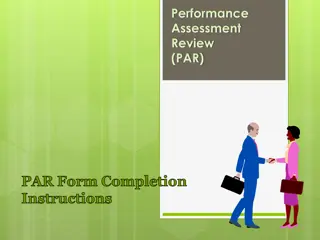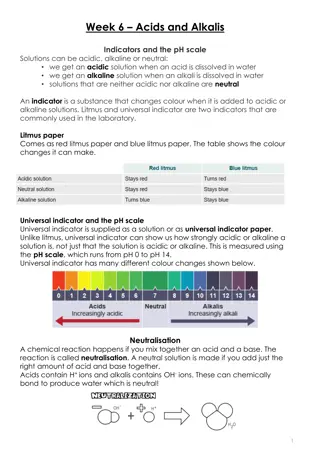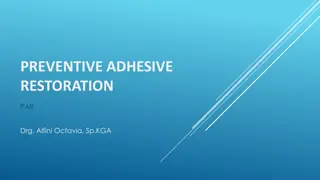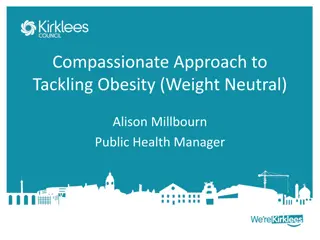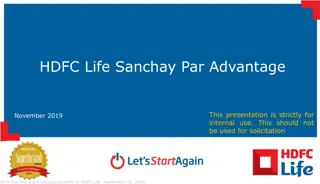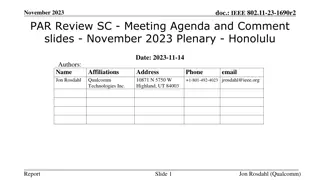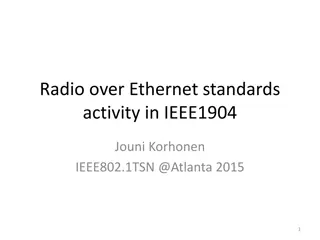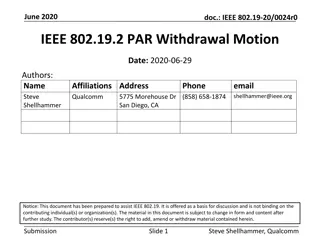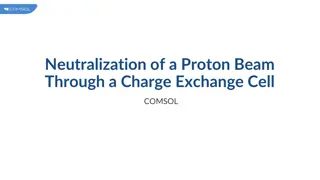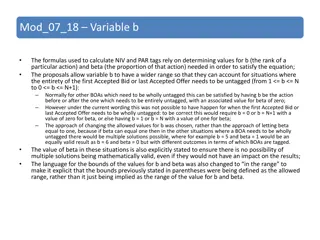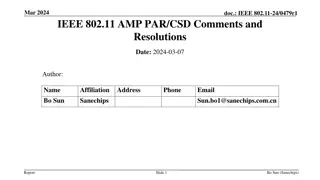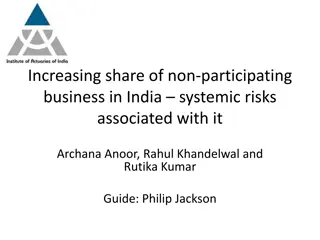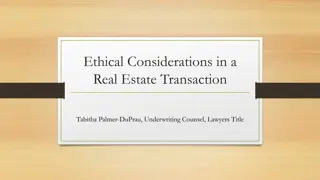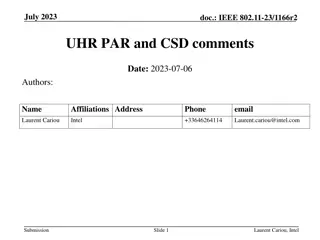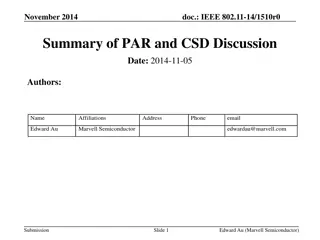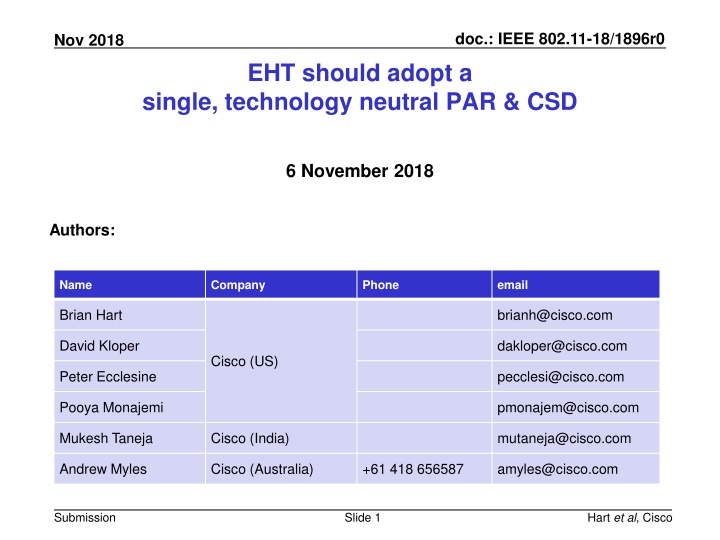
IEEE 802.11 EHT Development Proposal for Enhanced Standards
In a document dated November 2018, a proposal by Cisco suggests maintaining a single, technology-neutral Performance and Conformance Statement (PAR/CSD) model for IEEE 802.11 EHT standards. The proposal aims to address stakeholders' desire for a more frequent update cadence for PHY/MAC standards. Two mechanisms are presented, proposing either a technology-specific or multiple PAR/CSD approach. However, the document emphasizes the need to stick to the traditional technology-neutral model to avoid potential complications and ensure successful standardization processes in the future.
Uploaded on | 0 Views
Download Presentation

Please find below an Image/Link to download the presentation.
The content on the website is provided AS IS for your information and personal use only. It may not be sold, licensed, or shared on other websites without obtaining consent from the author. If you encounter any issues during the download, it is possible that the publisher has removed the file from their server.
You are allowed to download the files provided on this website for personal or commercial use, subject to the condition that they are used lawfully. All files are the property of their respective owners.
The content on the website is provided AS IS for your information and personal use only. It may not be sold, licensed, or shared on other websites without obtaining consent from the author.
E N D
Presentation Transcript
doc.: IEEE 802.11-18/1896r0 Nov 2018 EHT should adopt a single, technology neutral PAR & CSD 6 November 2018 Authors: Name Company Phone email Brian Hart brianh@cisco.com David Kloper dakloper@cisco.com Cisco (US) Peter Ecclesine pecclesi@cisco.com Pooya Monajemi pmonajem@cisco.com Mukesh Taneja Cisco (India) mutaneja@cisco.com Andrew Myles Cisco (Australia) +61 418 656587 amyles@cisco.com Submission Slide 1 Hart et al, Cisco
doc.: IEEE 802.11-18/1896r0 Nov 2018 EHT should use the old model of one technology- neutral PAR, just like 802.11g/n/ac/ax! There is a desire by some stakeholders for 802.11 to transition to a two-year cadence for PHY/MAC standards Situation Two mechanisms (with one & two PAR/CSDs respectively) are proposed to implement the two-year cadence concept The use of technology-specific PAR/CSDs by both mechanisms is unsatisfactory Complication The 2nd PAR/CSD in the 2nd mechanism is likely to be unsuccessful or may cause both PAR/CSDs to fail EHT should be developed using the old model of one technology-neutral PAR, just like 802.11g/n/ac/ax! Solution Submission Slide 2 Hart et al, Cisco
doc.: IEEE 802.11-18/1896r0 Nov 2018 There is a desire by some stakeholders for 802.11 to transition to a two-year cadence for PHY/MAC standards There is a perception by some stakeholders that the traditional approach of utilising technology neutral PAR/CSDs is inappropriate for the next 802.11 PHY/MAC generation The basic concern is the open nature of technology neutral PAR/CSDs means that a new PHY/MAC generation standards is only completed every 5 years or so whereas some stakeholders would prefer a two year cadence of smaller and more focused PHY/MAC standards to: Drive more frequent Wi-Fi product improvements & turnover Enable Wi-Fi to respond in a more timely manner to competition from other technologies, including 3GPP defined NR-U Submission Slide 3 Hart et al, Cisco
doc.: IEEE 802.11-18/1896r0 Nov 2018 Two mechanisms (with one & two PAR/CSDs) are proposed to implement the two-year cadence concept 1 Technology-specific PAR/CSD 2 Multiple PAR/CSDs One PAR/CSD constrained to specific technologies that are more likely to be suitable for standardisation in the next two years eg 320 MHz, 16SS & possibly others (multi-band?) for the generation beyond 11ax A first PAR/CSD for standardisation of specific technologies in the next two years or so A second PAR/CSD for more complicated features requiring further study in the longer term Original proposal focused on short term goal of a new PHY/MAC standard in the next two years or so Refined compromise proposal that allows for additional & more complex features to be developed in a second PAR/CSD for the longer term Submission Slide 4 Hart et al, Cisco
doc.: IEEE 802.11-18/1896r0 Nov 2018 The use of technology-specific PAR/CSDs by both mechanisms is unsatisfactory More technical discussion is required before forcing EHT into a direction that is unlikely to be changed 802.11aa is an historic example showing that PAR changes are unlikely 1 Technology-specific PAR/CSD 2 Multiple PAR/CSDs One PAR/CSD constrained to specific technologies that are more likely to be suitable for standardisation in the next two years eg 320 MHz, 16SS & possibly others (multi-band?) for the generation beyond 11ax A first PAR/CSD for standardisation of specific technologies in the next two years or so A second PAR/CSD for more complicated features requiring further study in the longer term 16SS is an example of a proposed EHT1 feature that has been clearly inadequately discussed Submission Slide 5 Hart et al, Cisco
doc.: IEEE 802.11-18/1896r0 Nov 2018 More technical discussion is required before forcing EHT into a direction that is unlikely to be changed The nature of technology-specific PAR/CSDs with a two year horizon, as proposed for EHT, is that they constrain work to features predicted to be ready for standardisation within two years This choice is problematic because: The SG has not yet had the benefit of technical presentations & discussions to inform any choice or prediction Such discussions typically occur during the TG phase; they could occur during the SG phase but the EHT SG Chair has deprioritised technical presentations this week Constraining the features means the TG is unable to take advantage of exciting or valuable new ideas as they emerge over the coming years It is possible to change the PAR/CSD but this is a rare & difficult/slow process Specifying required features now means the TG will be forced to complete features whose technical merit or feasibility is known to be diminishing It is possible to change the PAR/CSD but this is a rare & difficult/slow process Submission Slide 6 Hart et al, Cisco
doc.: IEEE 802.11-18/1896r0 Nov 2018 16SS is an example of a proposed EHT1 feature that has clearly been inadequately discussed One of the features that has been proposed for the first technology- specific PAR/CSD (EHT1) is 16SS 16SS has some obvious benefits if high throughput is the goal However, it is not really suitable or applicable as a technology for an EHT1 standard to be finished within two or so years Based on historical patterns, 16 SS is a feature probably only suitable for the ultra high end in about 2024 (see 11-18-1539-00) 16SS will be complex to standardise with two years in manner that is useful Explicit sounding overheads scale with antenna count and so we need greater compression of explicit sounding we need hooks for implicit sounding There has been some discussion of these issues but more is needed to understand & potentially mitigate these issues before specifying 16SS as suitable as a standard feature in two years time Submission Slide 7 Hart et al, Cisco
doc.: IEEE 802.11-18/1896r0 Nov 2018 802.11aa is an historic example showing that PAR changes are unlikely The 802.11aa PAR defined 5 work areas, with HW changes implicitly precluded: Graceful degradation of audio video streams when there is insufficient channel capacity, by enabling packet discarding, without deep packet inspection Increased robustness in overlapping BSS environments, without the requirement for a centralised management entity Intra-Access Category prioritization of transport streams by modifying EDCA timing and parameter selection, without deep packet inspection, Improved link reliability & low jitter characteristics for multicast/broadcast audio video streams, Interworking with relevant 802.1AVB mechanisms (802.1Qat/Qav/AS) Partway through the project, TGaa realized it could address 3-4 of these items well; but could not move the needle on another 1-2 items However, TGaa found it was easier to put something in the 802.11aa draft, however weak or pointless, rather than change the PAR Slide 8 Submission Hart et al, Cisco
doc.: IEEE 802.11-18/1896r0 Nov 2018 The 2nd PAR/CSD in the 2nd mechanism is likely to be unsuccessful or may cause both PAR/CSDs to fail 1 Technology-specific PAR/CSD 2 Multiple PAR/CSDs One PAR/CSD constrained to specific technologies that are more likely to be suitable for standardisation in the next two years eg 320 MHz, 16SS & possibly others (multi-band?) for the generation beyond 11ax A first PAR/CSD for standardisation of specific technologies in the next two years or so A second PAR/CSD for more complicated features requiring further study in the longer term Technical issue: two EHT TGs are likely to waste preambles Process issue: it is unlikely two TGs working on very similar topics can successfully amend 802.11 in parallel Ecosystem issue: insignificant minor amendments puts 802.11 s inter-generational success at risk Submission Slide 9 Hart et al, Cisco
doc.: IEEE 802.11-18/1896r0 Nov 2018 Technical issue: two EHT TGs are likely to waste preambles Suppose two parallel TGs (EHT1 & EHT2) are formed, as proposed, to develop amendments with short term & long term time horizons It is likely that EHT1 will need a new preamble optimized for the short term features It is also likely that EHT2 will need another new preamble optimized for the long term features Each new preamble increases the false alarm rate and adds overheads and (HT/VHT carry 8us of overheads; HE carries 12us of overheads) A critical prerequisite for 802.11 s long term evolution in existing bands is to have an extremely high bar before a new preamble is allocated Submission Slide 10 Hart et al, Cisco
doc.: IEEE 802.11-18/1896r0 Nov 2018 Process issue: it is unlikely two TGs working on very similar topics can successfully amend 802.11 in parallel A key question is whether the 802.11 WG processes will enable two parallel TGs (EHT1 & EHT2) on very similar topics to both succeed? The likely answer is that either both TGs will fail to make progress or only the EHT1 will make progress EHT1 & EHT2 will compete for human resources & meeting slots; in similar situations, the usual outcome is that the short term project starves the longer term project of resources Even if both TGs manage to obtain sufficient resources, there will a significant coordination burden because they are likely to be making changes to the same clauses; parallel sessions will make the burden even worse There is a high likelihood that EHT1 will dump difficult issues into EHT2 causing it to accumulate a negative perception as the never-never project ; and this is likely to become reality The former outcome is clearly unsatisfactory; the latter outcome has the same issues as the first proposed mechanism Submission Slide 11 Hart et al, Cisco
doc.: IEEE 802.11-18/1896r0 Nov 2018 Ecosystem issue: insignificant minor amendments puts 802.11 s inter-generational success at risk 802.11 s major MAC/PHY standards generations (11b/g/n/ac) have succeeded (at least partially) because each new amendment has: Remained backward compatible with the previous generation Enabled a significant increase in capability, driving an upgrade cycle Incorporated both peak rate improvements (for the excitement), as well as a range of other background features (to actually enhance users experiences) eg aggregation, multi-user operation, improved power save mechanisms, deleting low MCSs, Avoided Osborning the previous generation Note: you need to know 1983 technology to understand this! Splitting EHT into two PAR/CSDs only two years apart, with limited differentiating or value adding features, is likely to put 802.11 s well established history of success across multiple generations at risk Submission Slide 12 Hart et al, Cisco
doc.: IEEE 802.11-18/1896r0 Nov 2018 EHT should be developed using the old model of one technology-neutral PAR, just like 802.11g/n/ac/ax! IEEE 802.11 WG already has a proven, successful development model One 5 year next generation project at a time, delivering a massive increase in capability on many fronts for 802.11 s multitudinous customers and use cases which enables the Wi-Fi Alliance to develop appropriate certifications of high profile features and efficiency enhancements in a manner that is timely to satisfy market needs and does not require the IEEE 802.11 WG to make impossible predictions long into the future There is one obvious choice for EHT One, technology-neutral PAR that will probably take five or so years to ratification just like 802.11g, 802.11n, 802.11ac, 802.11ax! Submission Slide 13 Hart et al, Cisco

